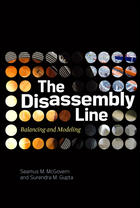NEW YORK — Business outlook improved notably among U.S. industrial manufacturers during the fourth quarter of 2014, according to the fourth-quarter 2014 Manufacturing Barometer, released today by PwC US.
A wide range of key indicators posted improvement during the fourth quarter, including the positive company forecasted average growth rate for the year ahead, while concerns about legislative and regulatory policies and lack of demand declined.
Optimism regarding the prospects of the U.S. economy during the next 12 months increased to 68 percent among U.S. industrial manufacturers during the fourth quarter, up from 57 percent in the previous quarter. At the same time, optimism about the world economy improved to 38 percent, up eight points from 30 percent in the third quarter, but still down from 47 percent in last year’s fourth quarter.
According to the survey, 60 percent of U.S. industrial manufacturers indicated plans to add employees to their workforce over the next 12 months, up from 52 percent in the third quarter and in line with last year’s fourth quarter. Overall, the total net workforce growth projection rose to 1.1 percent in the fourth quarter, up from 0.4 percent in the third quarter and 0.5 percent in the fourth quarter of 2013.
The latest report includes a special section on human capital, which reveals a continued shortage of skilled workers across the U.S. industrial manufacturing sector, as two-thirds of respondents cited a need to fill certain skill gaps in their businesses over the next 12 to 24 months.
The biggest skill gaps identified were in skilled labor (75 percent) and in middle management (41 percent). Further highlighting the issue, over the past year, two-thirds of U.S. industrial manufacturers also reported having open positions that they were unable to fill with experienced or skilled employees. In order to begin filling the gap, 78 percent of U.S. industrial manufacturers plan to hire new skill function employees over the next 12 to 24 months with the broadest needs in engineering/design (62 percent), manufacturing (44 percent) and R&D (28 percent).
According to the survey, plans for operational spending rose to 82 percent of respondents, the highest level in nine quarters and up 13 points from 69 percent recorded in the third quarter and 73 percent in last year’s fourth quarter. Plans for new product or service introductions increased to 52 percent, up significantly from 43 percent in the third quarter, while plans for spending on research and development increased 11 points to 47 percent from 36 percent in the third quarter. At the same time, sentiment regarding plans for new investments of capital remained healthy with 43 percent of respondents indicating increased outlays in the next 12 months, up from 36 percent in the previous quarter and in line with the fourth quarter of last year.
Despite uncertainty regarding the global economic outlook, 18 percent of respondents indicated plans to develop new facilities abroad, up from 9 percent in the third quarter and 8 percent in the fourth quarter of 2013.
With regard to perceived head winds, 32 percent of respondents singled out legislative/regulatory pressures as the major head wind to growth over the next 12 months, a sharp 27-point drop from 59 percent last quarter and 15-point drop from 47 percent in the fourth quarter of 2013. This decrease was followed by lack of demand, which was cited by 35 percent of respondents, down from 43 percent during the third quarter. Conversely, concerns regarding the lack of qualified workers increased to 33 percent during the fourth quarter, compared to 26 percent in the third quarter and 20 percent last year.
For more information, visit www.barometersurveys.com

